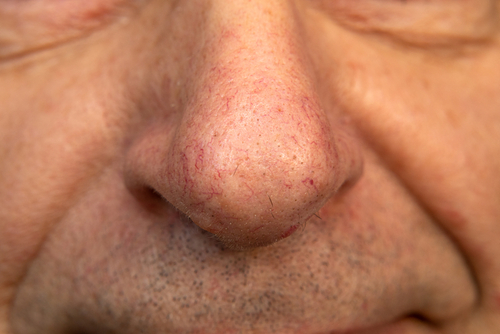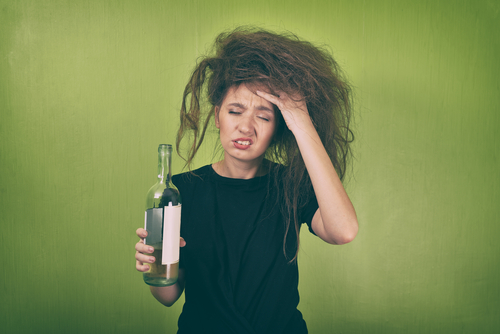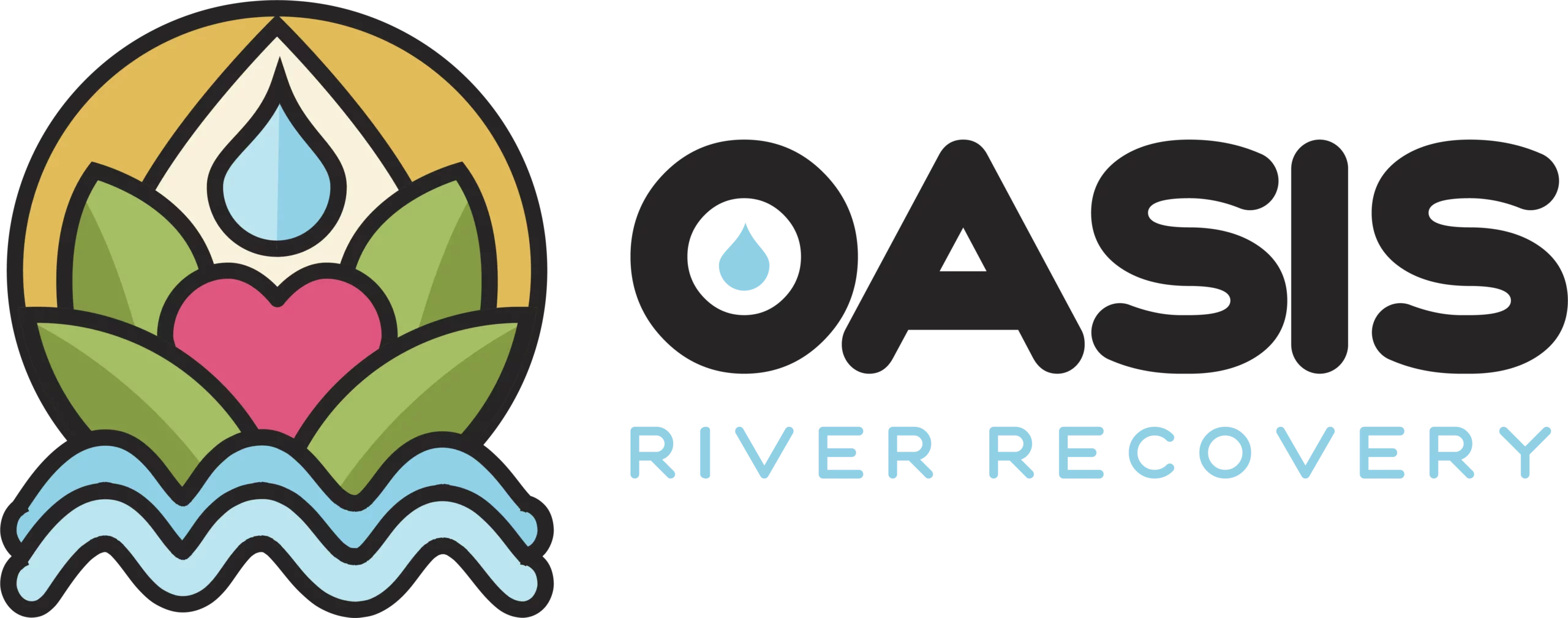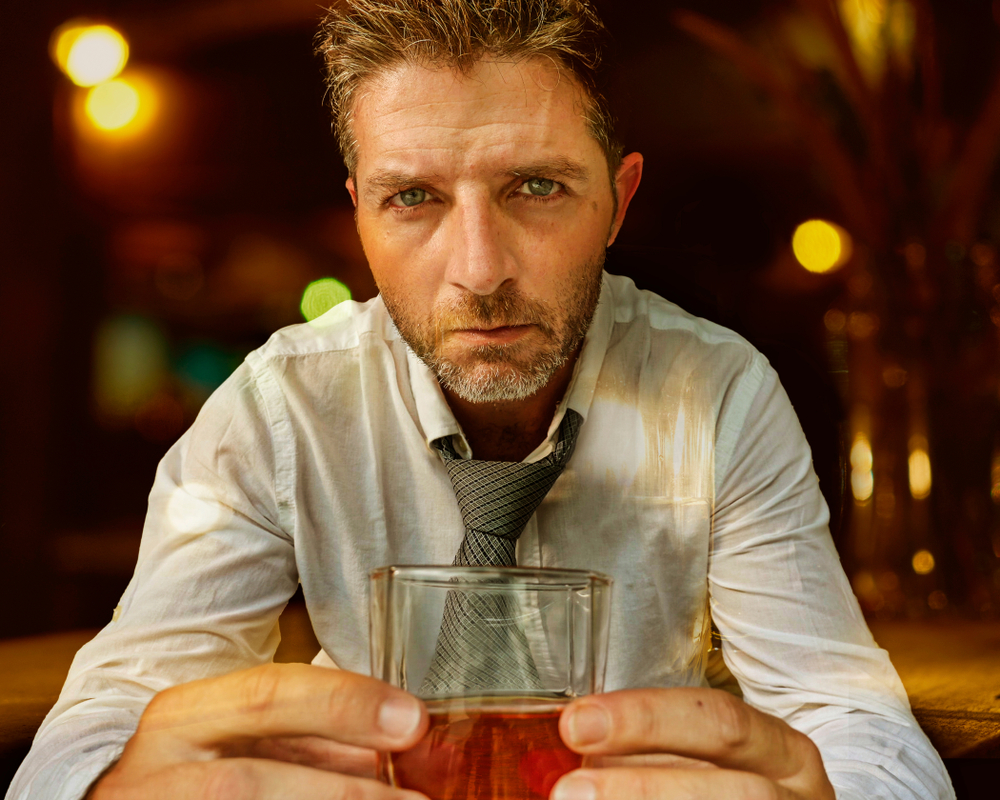If you want to know how to spot an alcoholic face, chances are you know or have met someone who could have an alcohol addiction. It can be easy to tell if someone is drunk at the moment, but once they’ve sobered up, the signs of alcohol addiction and abuse can leave lingering effects on the body, including the face. You’re probably not looking to call out or judge a loved one, but catching signs of addiction at any stage can lead to healthy and positive changes.
By the end of this article, you’ll learn how to spot an alcoholic face, understand the distinctions between a drunk and alcoholic appearance, explore methods to potentially reverse the effects of alcohol on the face, and learn about four effective ways to address alcohol addiction.

How To Spot An Alcoholic Face
Here are ten common features of someone who abuses or is addicted to alcohol.
- Facial redness: Also known as “alcohol flush reaction,” facial redness occurs when the body cannot metabolize acetaldehyde, a toxic chemical produced by alcohol consumption. The liver can metabolize small amounts of acetaldehyde but will struggle if there’s too much. This causes blood vessels, including the ones in our faces, to dilate (expand), causing redness or blushing.
- Spider veins: Spider veins are damaged blood vessels that appear red, blue, and even purple. Long-term alcohol abuse can cause capillaries (micro blood vessels) in the face to expand to the point where they break and allow blood to accumulate in the vein rather than traveling to the heart. This condition, also called telangiectasia, can be permanent and occur anywhere else on the body, mainly the legs.
- Puffy face: Because alcohol increases urine production (diuretic), the body will retain as much water and fluid in the face, legs, ankles, and hands as possible to avoid dehydration. However, heavy drinking can exacerbate this process, and most alcoholic drinks have a lot of calories and hinder the liver’s ability to remove toxins and fluid.
- Yellow eyes: Also called jaundice, yellow eyes and skin on an alcoholic face are caused by the liver’s inability to remove bilirubin, a yellowish bile used to digest food. This build-up of bile can fill the capillaries in the eyes and beneath thin skin, leading to yellow facial coloration. This usually lasts until a hangover subsides but can remain much longer in frequent drinkers
- Poor skin: Dehydration from chronic alcohol abuse can cause the skin on the face to lose its elasticity and resilience, leading to dry, flaky, and wrinkled skin. Alcohol can also damage the liver and weaken the body’s immune system and ability to remove toxins. This can result in longer-lasting scabs, skin sores, and pimples. Chronic alcohol abuse can also deplete the body of essential vitamins and nutrients, including vitamin A and collagen, which both contribute to skin health.
- Bloodshot eyes: As mentioned earlier, chronic alcohol abuse can cause blood vessels in and around the eyes to dilate, leading to persistently dry, irritated, and bloodshot eyes. In rare cases, alcohol abuse can also lead to permanent blindness or vision loss due to the increased risk of age-related macular degeneration and optic neuropathy.
- Dark circles: Studies show that those who drink large amounts of alcohol before bed (which is common for alcoholics) take less time to fall asleep but experience more sleep disruptions and less sleep quality. Collagen is naturally produced when we sleep, and disrupting the sleep cycle can lead to pale skin, which makes the blood vessels below the eyes appear more prominently. This can also lead to hanging eyelids, redness, and swelling.
- Enlarged nose: Chronic alcohol abuse can also cause blood vessels in the nose to swell, causing the skin outside to enlarge and turn red. This condition, rhinophyma, can also cause the nose to become bumpy and turn purple.
- Poor facial grooming: Abusing alcohol can become the first and only priority of an individual, and they can quickly neglect self-care and personal hygiene routines, such as washing and moisturizing their face or washing and combing their hair. They might also forget to shave or trim facial hair, and if someone wears makeup, they could forget to wipe it off before they sleep after heavy drinking and develop eye infections, styes, blackheads, and acne flare-ups.
- Bad breath: Alcohol abuse can lead to excessive retching and burping, which allows acetic acid, a foul and vinegar-like chemical, to come out from the stomach. This acid can also cause bacteria to linger on the surface of the tongue and throat, leading to fungus or mold-smelling breath.
Drunk Face Vs. Alcoholic Face
The difference between a drink and an alcoholic face is if visual signs of alcohol abuse remain longer after someone has stopped drinking. Heavy drinking might lead to dark circles, bloodshot eyes, and other hangover symptoms the day after, but they’ll usually subside within a day or two since alcohol remains in the body longer than the amount of time intoxicated. Additionally, not everyone who drinks heavily or frequently develops signs of visual intoxication. Depending on genetics and overall health, someone can appear completely sober while under the influence of other drugs.
Read more: Is Alcohol A Narcotic & How It Compares To Other Drugs

Can You Reverse Alcohol-Induced Facial Changes
Yes, most of the physical changes to the face caused by alcohol abuse can be reversed if you quit or significantly reduce drinking and adopt healthier habits. Spider veins, jaundice, poor skin, bloodshot eyes, and rhinophyma can all become permanent if alcohol abuse isn’t addressed. The best ways to support and heal your body include drinking water daily, eating well-balanced meals rich in vitamins and nutrients, and regularly exercising.
It’s also important to maintain an effective skincare routine, such as using a facial cleanser, alcohol-free facial toner (alcohol dries the skin), and applying a rich moisturizer containing antioxidants, vitamin B5, or humectants. You can also boost your sleep routine by using two pillows and regularly washing their covers. None of these changes will reverse the effects of alcohol on the face overnight, but over time, you should begin to notice fewer wrinkles, clearer and brighter skin, smaller pores, and less redness.
Read more: Is Alcohol A Narcotic & How It Compares To Other Drugs
Alcoholic Vs. Addict
The terms alcoholic and addiction are usually used to separate someone specifically with an alcohol use disorder (AUD) from someone with a broader substance use disorder (SUD), including alcohol. Despite its legality, alcohol is still a drug and can lead to physical dependency and cause the body to experience potentially fatal withdrawal symptoms if someone suddenly stops drinking. Alcoholics and addicts are both drawn to substances like alcohol or opioids because of their mood-lifting and physical or emotional pain-relieving effects. This applies to nicotine, Kava, cannabis, and caffeine.
Read more: How Group Art Therapy Helps With Mental Health & Addiction

4 Alcohol Addiction Treatment Options
Alcohol addiction is like any other medical condition, requiring treatment to address side effects, contributing factors, and long-term changes to mental and physical health. Spotting an alcoholic face is only the first step toward recovery. If you look into the mirror or notice the abovementioned signs on a loved one, now’s the time to step up and say something. An alcoholic may not notice these signs themselves, and hearing them from someone who cares or even a medical professional can direct them toward seeking help. Some of the best and most effective ways to treat an alcohol addiction include:
Residential programs: Residential alcohol addiction treatment requires clients to stay overnight and is the highest level of care and structure at most rehab facilities. This is the ideal program for individuals who have not been able to detox or quit using alcohol on their own since they’re supervised and monitored 24/7. This helps establish essential recovery skills that can set the foundation for the rest of the treatment, allowing them to transition into lower levels of care easily.
Partial hospitalization program: PHPs provide the second highest alcohol addiction treatment and structure. Clients attend treatment 40 hours a week but return to a sober living facility at the end of each clinical day. This helps them maintain sobriety, prevents relapse during the most intense cravings, and allows them to hear and share perspectives with other clients.
Intensive outpatient program: IOPs allow individuals to attend alcohol addiction treatment and return home every day. This is one of the lowest levels of care but still offers the same therapy methods and healing modalities as other programs. This is perfect for individuals who are ready to transition back into their career, schooling, or family life while still being able to work through the final stages of treatment.
Aftercare: Aftercare programs provide weekly, bi-weekly, or monthly checkups to individuals who’ve completed a residential, PHP, or IOP addiction treatment program. Clients can meet with therapists or counselors they met at treatment, interact with other alums, and fine-tune and address issues or drawbacks that can arise months or years after leaving a program.
Read more: How Group Art Therapy Helps With Mental Health & Addiction
Contact Oasis River Recovery
If you or someone you know has an alcoholic face, contact Oasis River Recovery. Our addiction treatment center in Ocoee, Tennessee, is a partial hospitalization program off the Ocoee River. We maintain a lower client-to-staff ratio to offer the highest level of personalized care. Our center has various holistic healing methods, including kayak trips, yoga, breathwork sessions, hiking, and much more. Call today, and one of our admissions agents can help you or a loved one sign up for alcohol addiction treatment or answer any preliminary questions.



